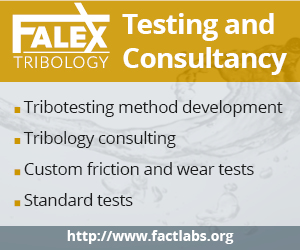Scope of Artificial Intelligence and Machine Learning in Tribology
Introduction to AI and ML
Right from mobile phone apps which recommend our favorite music to the most sophisticated autonomous vehicles, every device in today’s times is embedded with artificial intelligence and machine learning. Taking this as an inspiration every field of science is looking for different ways to apply AI and ML, and Tribology is not an exception.
Before diving into the use of AI and ML in Tribology lets familiarize ourselves with some basics of MI and AI to have a better understanding. AI in simple words is the ability to build machines which are smart and can take intelligent decisions, this can be achieved by Machine learning. Machine learning is the process of training a machine (or an algorithm that eventually runs the machine) by giving large amounts of data to make decisions.
We can train an algorithm by using machine learning in two different methods i.) supervised learning and ii.) unsupervised learning. Supervised learning is the process of making a machine learn by mapping from train to target dataset, while unsupervised learning is done by finding patterns and clustering. An algorithm for a machine is like a soul for a body, it is the main frame that runs behind and takes decisions. Deciding an algorithm depends on the kind of approach we are looking for, to solve the problem.
Scope of AI and ML in Tribology
Now that we have some basic understanding about AI, ML and how they work, let’s move to their practical applications. There are multiple scopes in Tribology for AI, namely:
- Online condition monitoring.
Starting from 1998, with the help of an artificial neural network several experiments were conducted to classify the wear particles in ball-on-disk sliding experiment. With the help of different parameters such as width, length, projection area, reflectivity and elongation. This is considered as a mile stone in this Crossfield after it’s success. Followingly, another worthy study on Diagnosis of localized defects in ball bearings is carried out with the help of multilayered feed forward neural network trained with supervised error back propagation technique and an unsupervised adaptive resonance theory. A similar study on wear behavior of lubricated journal bearing was also done later.
- Design of material composition
Investigative studies based on the experimental results were conducted to validate the algorithms used on experiments like sliding contact of sintered steels. Which are manufactured using powder metallurgy. As this kind of manufacturing technique is predominant in engine parts and transmission systems, and generally its failure is related to friction and wear.
Three different approaches are used to prove this experimental validation. In which all three showed promising and accurate results. The first method is used with the help of an ANN, which has the ability to learn and handle non-linear neural networks. Secondly, Fuzzy systems are used which are also good with non linear systems and especially with time dependent functions. The last approach is based on Fuzzy-neuro system which is the combination of both the approaches.
Composites are also subjected to different experimental procedures, to study the tribological behavior of brakes and clutches materials. For instance, research is done to predict the tribological properties of polyphenylene sulfide such as friction and wear. The input variables considered for this experiment are material composition, sliding speed and contact pressure.
- Lubricant Formulations
One of the most advanced use of AI in tribology is developed on Lubricant formulations. This will help in creating optimum lubricant properties, while blending different combinations of oils. Two different artificial neural networks are used to predict the formulation, resulting in two different lubricants with different compositions. For example, research based on the combination of sunflower oil and rapeseed oil is also done to find the best combination for a lubricant with the least coefficient of friction. Additionally, studies are done with castor oil lubricant using generic algorithm and ANN, which yielded a composition that decreased the friction by 50% during experimental results
- Lubrication and Fluid film formulation.
AI and ML are helpful to find lubricant film formation and friction behavior in thermo-hydrodynamically lubricated and thermo-elastohydrodynamically lubricated contacts. Algorithms are trained by connecting highspeed data signals of torque sensor. ANN is used in majority of the studies to predict the lubrication performance. In which numerical simulations are used to predict the train dataset. It is to be noted that, sample size and training algorithm has considerable impact on the accuracy.
Challenges and Future advancements
Now that we have explored different ways in which AI is used in tribology lets look at the challenges and possible advancements in this field. In future, there is a good chance of research in microscopic level. Especially, using nano particles, where the prediction of optimum size of nano particles will be done for the formation of a tribo-layer. Dynamic changes such as, the variation of surface topology during running and wearing can also be predicted. Which can be a huge advancement in understanding dynamic changes in different materials under different applications. If we are looking at more practical applications, we can confidently predict that AI methods will be mandated in design processes to understand the changes in dry and lubricated components. For example, finding optimum film thickness for machine components based on operational conditions like sliding speed, load, textures and surface topologies.
Due to fast paced developments in the field of AI and ML and the increase in the computational power of machines with vast amounts of data. Using improved and accurate AI models, we can safely predict that, considerable and serious advancements in the field with more practical applications on bearings, gears, brakes and clutches can be achieved.
Looking at the other side of the coin, one of the biggest obstacles in front of us is the unreliability of results due to difference in sensor systems and setups used while experimenting. With good amount of research for reliable and suitable use of data and collaboration with experts from different fields such kind of obstacles can be easily conquered.
Key Words
Tribology; Artificial intelligence; Machine learning.
Abbreviations
AI – Artificial Intelligence
ML – Machine learning
ANN – Artificial neural network
References
- Andreas Rosenkranz, Max Marian, Francisco J. Profito, Nathan Aragon and Raj Shah, The Use of Artificial Intelligence in Tribology—A Perspective, https://doi.org/10.3390/lubricants9010002.



Be the first to comment